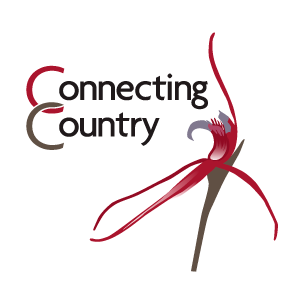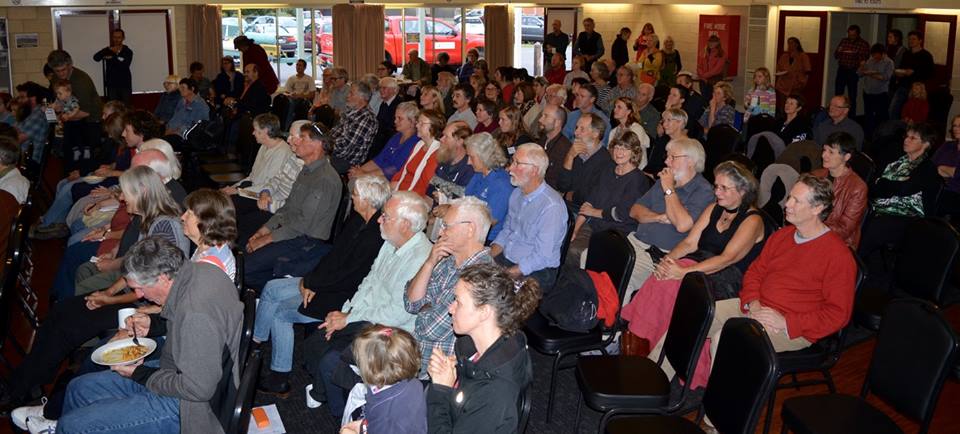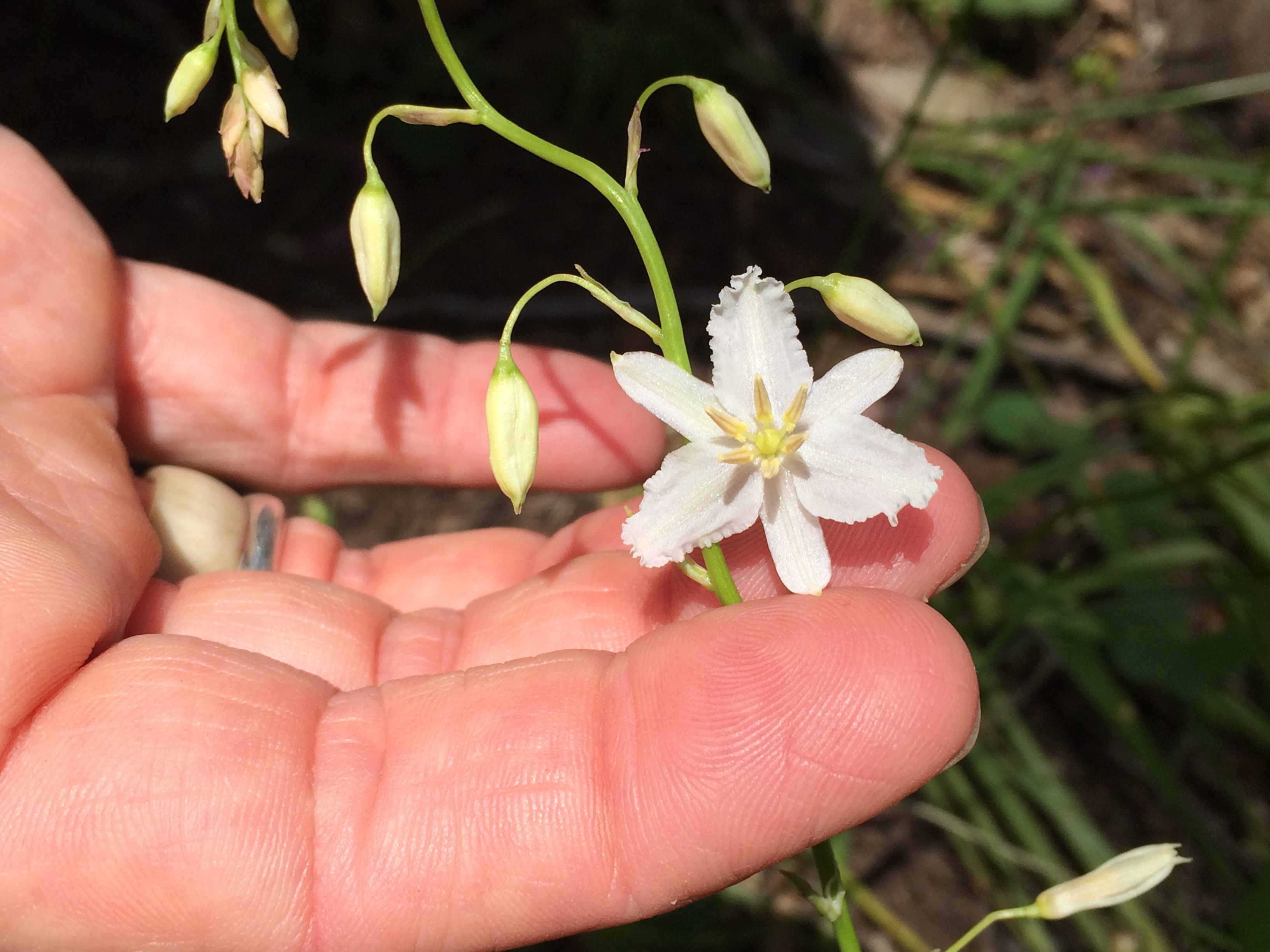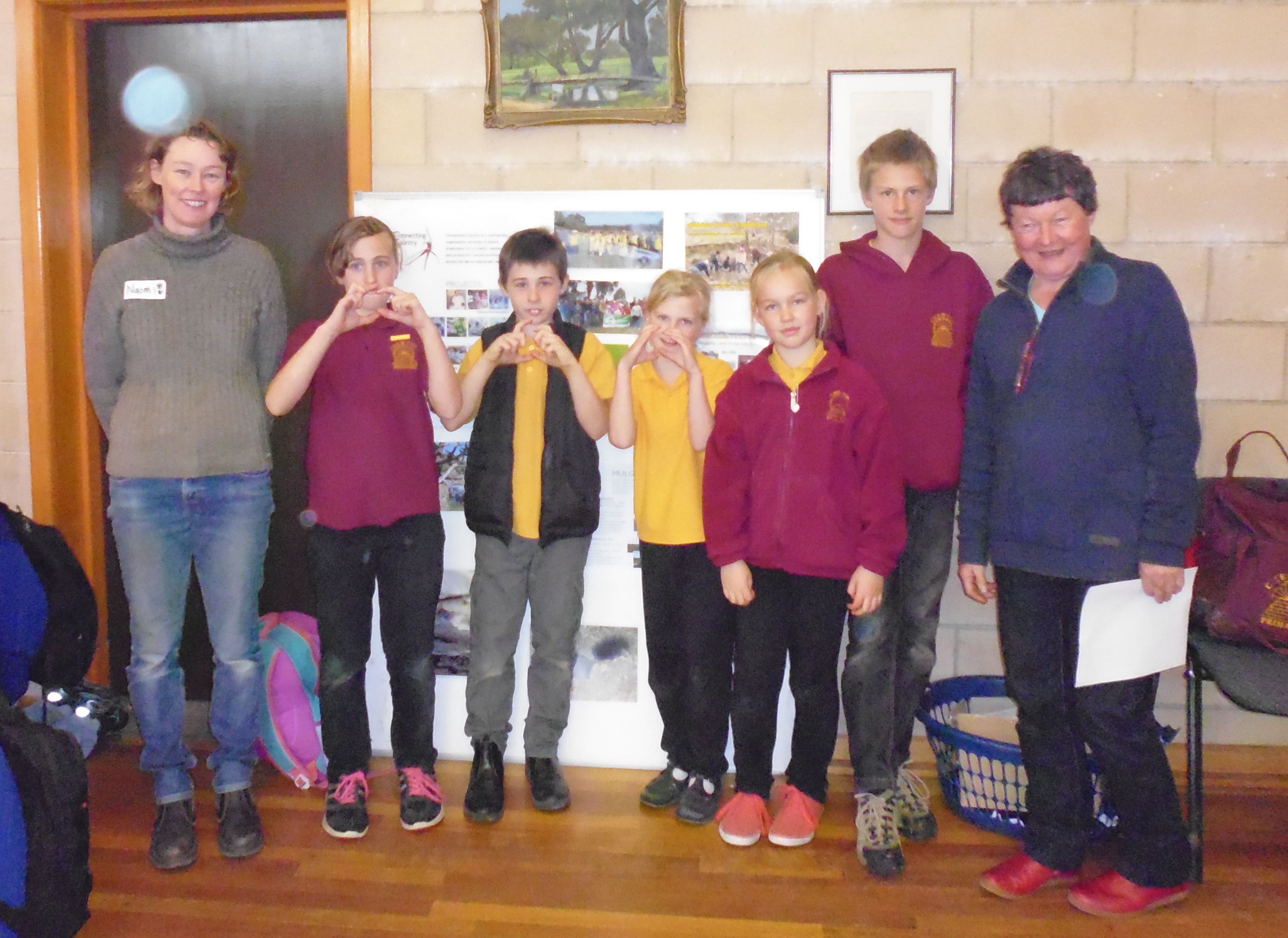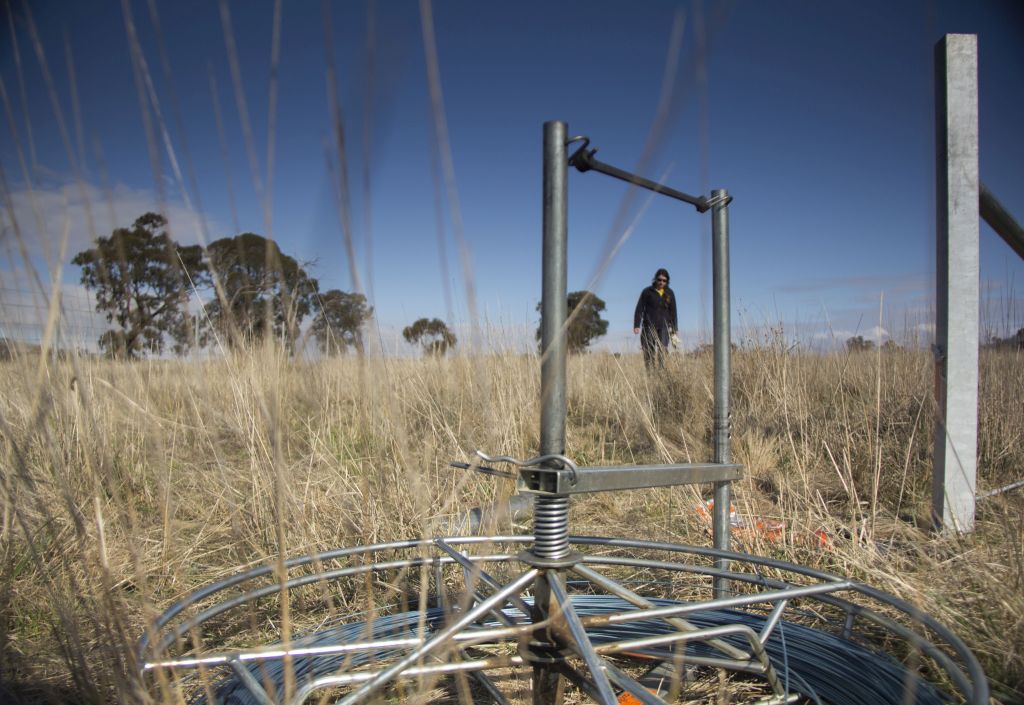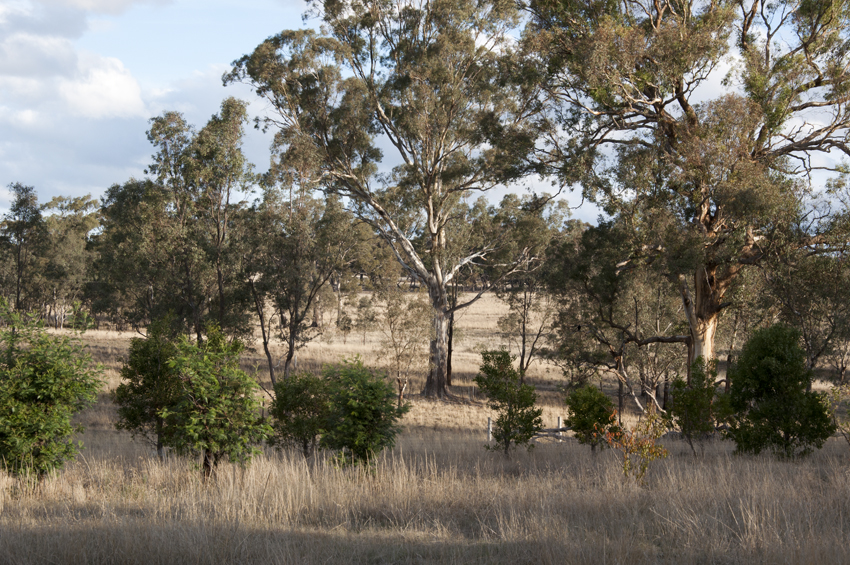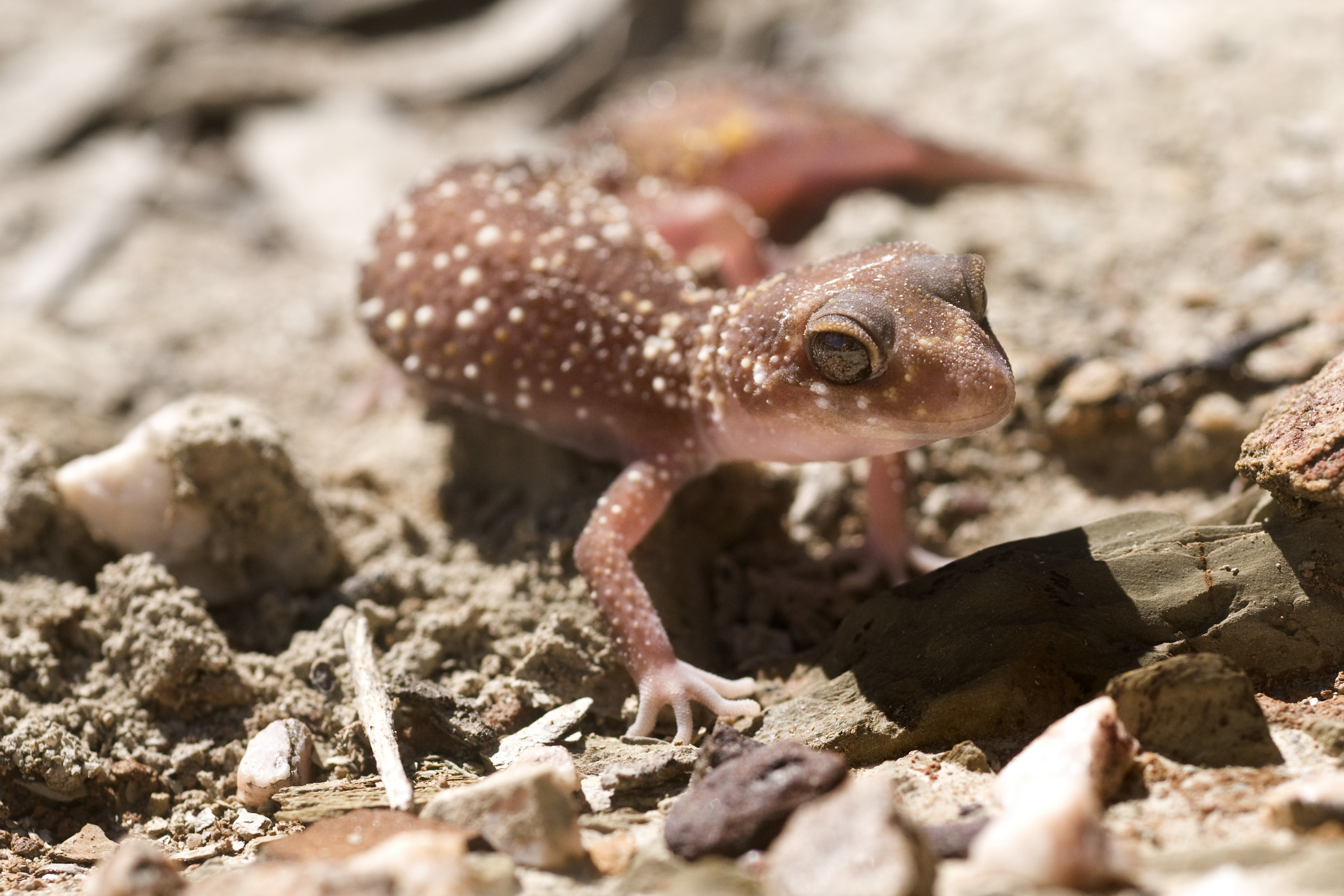Local Landcare on the Radio
Posted on 16 February, 2017 by Asha
Over the next couple of months some of our valiant local Friends and Landcarers will be guests on 94.9 MainFM’s Hear Say radio program (see schedule below). Tune in between 9:30am and 11:00am on Tuesday mornings to hear their stories. You can also CLICK HERE to visit the MainFM website where you can listen live.
| Date | Name | Group |
| Tue 28th February | Karl Just | Castlemaine Landcare |
| Tue 14th March | Bev Phillips | Maldon Urban Landcare Group (MULGA) |
| Tue 28th March | Lee Mead | Tarrengower Cactus Control Group |
| Tue 11th April | Daryl Colless | Barkers Creek Landcare & Wildlife Group |
| Tue 26th April | Greg Waddell | Castlemaine Landcare |
Nature News February 2017 – Revitalising country mindfully with fire
Posted on 8 February, 2017 by Connecting Country
For this month’s Nature News, on page 28 of this week’s Midland Express (7 February 2017), local resident and member of the Muckleford Forest Friends group, Chris Johnston shares her understandings gained at the Talking Fire event last year.

Talking Fire presenters – Trent Nelson (DDWCAC), Paul Bates and Peter Skilbeck (DELWP) and Mick Bourke (DDWCAC), at the Mt Tarrengower fire tower. Photo taken by: Julie Millowick
In the dryness of summer, the risk of fire can feel imminent. But ecologically, our remarkable Box-Ironbark landscape isn’t driven by fire. At Talking Fire, a community event held in Newstead in November last year, local ecologist Dr David Cheal revealed that our Box-Ironbark forests don’t actually need fire to regenerate. In fact, fires more often than every 30 years will reduce the range of plant species, impacting on the insects, birds and animals that live in these forests, and ultimately the chance to enjoy the diversity that Box-Ironbark country has to offer.
The species we can see today across Box-Ironbark country reflects their evolutionary past, and thus the influence of fire events. And so they reflect a low prevalence of natural fires, and probably the small-scale, highly targeted use of fire by Aboriginal people. The prevalence of fires increased dramatically when colonial settlers arrived; fire was a useful way to clear the land. Planned burns on public land, careless actions in the rural landscape, and the occasional arson and lightning strike have continued that pattern of more frequent burning.
So how do we sustainably manage, or in fact restore the ecological complexity of these forest remnants, and what might the role of fire be in this process?
In the past, Jaara people would have used fire as part of revitalising Country and encouraging certain species, so using fire as a carefully applied management tool has its attractions. At Talking Fire, Dja Dja Wurrung traditional owners Trent Nelson and Mick Bourke spoke about their desire to explore this possibility, working with the state government, the Shire and the wider community to share knowledge and explore ways that fire can be used to undo past damage and helping regenerate Box-Ironbark country.
A NSW project – Firesticks – is leading by example. It is designed to bring together scientists, Aboriginal people, government, and the Rural Fire Service to apply contemporary and Aboriginal fire practices to enhance biodiversity, connectivity and landscape resilience, and ultimately find new ways to care for the environment and keep the people and the places we love safe.
To read about Talking Fire and Dr Cheal’s comprehensive report on the fire sensitivity of Victoria’s native vegetation communities, visit www.talkingfire.org. Dr Cheal will also be the guest speaker on the role of fire in local landscapes at the monthly general meeting of the Castlemaine Field Naturalists Club on 10th February, please see our earlier post for details. To find out more about the Firesticks Project visit www.firesticks.org.au.
Stinkwort: Act now or be forever stinky!
Posted on 2 February, 2017 by Connecting Country
Bonnie came in from the field this week with something for us all to get our noses around. After a quick wiff, we thought we’d share what we learnt. Stinkwort or Dittrichia graveolens is an annual herb which grows to around 50cm high and is listed as a restricted weed in the North Central Catchment. It is easy to distinguish from other plants due to its stinky odour when touched. Most importantly, now is the perfect time to act if you have Stinkwort on your property.
This plant is a coloniser or pioneer which means that it grows quickly in areas with little competition such as around dams or along roadsides. It can sometimes be seen after a road has been graded or in areas where disturbance has occurred. Apart from the distinctive smell it also has a sticky almost greasy feel which makes it a last resort for browsing animals. This species is from the daisy family and produces large amounts of wind dispersed seed.
If you have found this plant now is the perfect time for controlling it as the plants are healthy and actively growing but most haven’t started producing flowers yet. The best ways to control Stinkwort include manual removal where individual plants occur, or with an appropriate registered herbicide. It is also possible to chip out plants in larger infestations and, as there are no flowers, leave them in situ rather than having to remove the whole plant.
While it is not known exactly how long the seeds of this species last it is guessed that they are short lived (up to 3 years) so it is possible to eradicate it and lessen the stink in your part of the world!
10 and 11 February 2017 – Castlemaine Field Naturalists AGM with guest speaker and excursion
Posted on 2 February, 2017 by Connecting Country
It’s a new year, and Connecting Country would like to share that the Castlemaine Field Naturalists Club (CFNC) are raring to go! The first event for the year is on the evening of Friday 10th February 2017 with both the Annual General Meeting (AGM) and a special guest speaker – David Cheal. The title of David’s talk is The role of fire in Box-Ironbark forests.
David Cheal is a botanist with expertise in ecological restoration, landscape ecology and survey methodologies He has worked at the Arthur Rylah Research Institute on aspects of the ecological impacts of fire in forests, and currently holds the position of Associate Adjunct Professor at Federation University, Ballarat.
David will make a short presentation on aspects of fire impacts in Box-Ironbark forests, and recovery of flora and fauna. He will then open the meeting to questions and comments from the audience, to extend the discussion in areas of interest to members. David Cheal has said that there are no “right” or “wrong” answers in this complex area – rather, there are wiser, more thoughtful answers and other answers that may be simple and attractive, but counter productive.
The evening will commence at 7.30pm at the Fellowship Room, which is located behind the Uniting Church on Lyttleton St (next door to the Castlemaine Art Gallery and Museum). After the brief AGM formalities, David will give his presentation. Members and visitors are encouraged to attend – and to stay afterwards for a chat during supper.
The excursion on the following day (Saturday 11th February 2017) will be related to the talk – a visit to the forests around the Red, White and Blue Mine in the Muckleford. CFNC members have been undertaking flora surveys in burnt and unburnt sites at this locality for many years, and this excursion will explore some of these areas and consider their differences. The excursion will depart at 1.30pm sharp from the U3A Octopus building on Duke St (opposite the Castle Motel) – weather permitting. Again, members and visitors welcomed and encouraged to attend. Car-pooling is likely to be available, and don’t forget to bring your afternoon tea.
If you would like to do more reading about fire ecology and management please see Connecting Country’s resources page on Biodiversity and Fire and the Talking Fire website.
Community Volunteer Action Grants survey closes this Sunday 5th February
Posted on 2 February, 2017 by Connecting Country
As part of the Threatened Species Protection Initiative, over $2 million dollars has been provided by DEWLP in Community Volunteer Action Grants (CVA). The program was designed to recognise the value of grassroots community action in making change happen quickly, and enable groups to deliver small-scale threatened species conservation projects on public and private land that strengthen community connections to the local environment.
Funds were directed towards supporting voluntary efforts to protect and restore threatened species habitat (such as planting of native vegetation) as well as engagement activities that increase the understanding and management of threatened species habitats (such as participation and training of volunteers in bird counts).
- CVA Round 1 funded 83 community delivered threatened species projects.
- CVA Round 2 is currently underway and will see 98 community threatened species projects delivered across the State. In CVA Round 2, eligibility to apply for grants was expanded and also included ‘not for profit’ organisations.
DEWLP are keen to hear your views and feedback on the Community Volunteer Action Grants program to help them design the next program.
A reminder that the survey will close this Sunday 5th February 2017.
It takes approximately 10 to 15 minutes to complete and questions center around what the program should focus on, who might apply for funding, how long a project should be able to run for and what activities should /should not be funded.
DEWLP have sent the survey to a range of groups but please feel free to share with your volunteer community environmental networks.
They are looking forward to hearing how they can best deliver their community grants, making it easier to achieve their common goal of ensuring the survival and prosperity of Victoria’s most threatened plants and animals and protecting our biodiversity.
To complete the survey use the link below:
http://www.surveygizmo.com/s3/3237824/Survey-CVA-Grants
February 2017 edition North Central Chat
Posted on 2 February, 2017 by Connecting Country
The first 2017 edition of the North Central Chat is out; featuring upcoming events, Landcare related news for community groups and information on several Shire grant rounds that are about to open, CLICK HERE (9 Mb download)
Secrets of the Maldon Historic Reserve
Posted on 25 January, 2017 by Asha
In 2015, photograph albums were uncovered in the archives of Maldon Urban Landcare Group (MULGA) which spoke of mystery. The albums provided some limited information about plots which were established by MULGA and the Castlemaine Field Naturalists between 1993 and 2006. These plots were fenced to offer protection to both the existing native vegetation and future natural regeneration from damage by grazing animals. However, in 2015 the few MULGA members closely involved in the past exclosure work were no longer around to provide details on the locations of each plot. Current MULGA members searched far and wide using clues uncovered in the albums, and after lots of time and effort managed to locate all eleven exclosures. They then held a plant identification day in September 2015, where each plot was visited and photographed, and a plant identification list for each was made by Frances Cincotta from Newstead Natives.
To start off 2017, members of MULGA ventured into the Maldon Historic Reserve to adorn the eleven plots with brand new signs. While setting up the signs, MULGA checked the fences surrounding each of the plots to make sure they were still intact and in good condition. It was also a great opportunity to explore these secluded bits of bush and do a bit of wildlife spotting, including lots of roos and one Marbled Gecko!
You can now find the locations and plant lists for the plots at MULGA’s new Connecting Country page dedicated to the project (CLICK HERE).
MULGA’s new signs for their plots were funded by the Mount Alexander Shire Council Community Grants Program. Applications for the current round of this funding are now open again until 4.00 pm on 17th February 2017. CLICK HERE to see our recent blog post with more information.
Save the date for weeds and rabbits – Wednesday 5th April 2017
Posted on 25 January, 2017 by Connecting Country
 Save the date for the Agriculture Victoria Weeds and Rabbits Workshop, which will be held on Wednesday 5th April 2017 at the Melbourne Cricket Ground (MCG). At the workshop they will review the learnings from systems mapping exercise and deliberate on strategies to support community action and guide future investment in established invasive species in Victoria. Arrangements will be made to cover costs of volunteers.
Save the date for the Agriculture Victoria Weeds and Rabbits Workshop, which will be held on Wednesday 5th April 2017 at the Melbourne Cricket Ground (MCG). At the workshop they will review the learnings from systems mapping exercise and deliberate on strategies to support community action and guide future investment in established invasive species in Victoria. Arrangements will be made to cover costs of volunteers.
JOIN THE CONVERSATION – SHARE YOUR STORY
Agriculture Victoria are seeking to connect with all people involved in blackberry, gorse, serrated tussock or rabbits pest management and invite you to share your story – private and public land managers, pest controllers, scientists, environmental consultants, farmers, business owners, people from government, industry and not-for-profits, people of diverse ages and backgrounds.
What motivates you to manage blackberry, gorse, serrated tussock or rabbits? What hinders your effort? What are your ideas for community action to manage blackberry, gorse, serrated tussock or rabbits? Got a picture to accompany your story?
Log on here, www.weedsandrabbits.com, it’s easy. Have a go or see what other people are saying.
For more information contact:
Agriculture Victoria Weeds and Rabbits Workshop Organisers
Phone: 1300 792 466
Email: reception@icms.com.au
10-11 February 2017 – Local plant and weaving workshop at Guildford Winery
Posted on 19 January, 2017 by Connecting Country
 The good folk at the Guildford Winery have asked Connecting Country to share details of their up coming Local Plant Weaving Workshop with Marilyne Nicholls. Marilyne is a renowned master weaver and generational Indigenous weaver, with extensive environmental knowledge about sedges and other plants. She is a member of the Victorian Aboriginal Weaving Collective with a strong Aboriginal traditional kinship connections to Victorian lands and to South Australian lands through her parents.
The good folk at the Guildford Winery have asked Connecting Country to share details of their up coming Local Plant Weaving Workshop with Marilyne Nicholls. Marilyne is a renowned master weaver and generational Indigenous weaver, with extensive environmental knowledge about sedges and other plants. She is a member of the Victorian Aboriginal Weaving Collective with a strong Aboriginal traditional kinship connections to Victorian lands and to South Australian lands through her parents.
This two day workshop will explore the symbiotic relationships or biological alliances formed between people, culture, grasses, sedges and different species of birds and insects. Participants will learn how symbiotic relationships are important to Australian weaving traditions and how this in turn promotes wild species biodiversity conservation. Knowledge about local plants and different weaving techniques will be taught by Marilyne.
Details as follows:
When: Friday 10th and Saturday 11th February 2017 – 10am to 4pm
Where: Guildford Vineyard, 6720 Midland Highway, Guildford
Cost: $240 for two days or $120 for one day. This amount is inclusive of plant material, lunch at the Cellar Door, morning/afternoon teas for vegetarians/vegans/yogic.
Numbers are limited, to secure your place, pay full amount or pay deposit for $60 for each day you’d like to attend. The deposit is non refundable.
To book please contact:
Email: guildfordvineyard@bigpond.com
Phone:54764457 or Mobile: 0411253506
For more info: www.guildfordvineyard.com.au
Spring/Summer Land for Wildlife newsletter
Posted on 18 January, 2017 by Connecting Country
Don’t miss the 2016 Spring/Summer edition of the Land for Wildlife newsletter. This great newsletter is full of informative stories from around the state by landholders and managers involved with the the Land for Wildlife program and makes for fun Summer reading. Please click on the banner below to view the latest edition.
Click here to subscribe and receive the Land for Wildlife newsletter by email.
2017 Mount Alexander Shire Council Community Grants Program- Now Open!
Posted on 18 January, 2017 by Connecting Country
The Mount Alexander Shire Council Community Grants Program provides support to local community-based projects and initiatives that align with Council’s goals and priorities. The council has notified us that the current round of funding is open for applications from 16th January 2017 and closes at 4.00 pm on 17th February 2017. These grants through council can be a great assistance to community groups in our area.
Information sessions are being held to give groups an opportunity to discuss their applications with Council representatives:
– Tuesday 31 January 2017, 10.00am – 11.00am, Maldon Neighbourhood Centre
– Tuesday 31 January 2017, 4.30pm – 5.30pm, Ray Bradfield Room, Castlemaine
– Wednesday 1 February 2017, 10.00am – 11.00am, Ray Bradfield Room, Castlemaine
Online applications can be made for the council grants via SmartyGrants once the funding round opens.
Download the Program Guidelines.
Council has also let us know that a Microsoft Word version of the application form is available for those unable to complete the application online.
For more information about the Community Grants Program, or for a Word version of the form, please call council on 5471 1744 or email grants@mountalexander.vic.gov.au.
Great guide from the CSIRO for monitoring your restoration efforts
Posted on 16 January, 2017 by Connecting Country
 In the spirit of sharing useful information for people involved and interested in conservation and land management, we’ve recently been made aware that the CSIRO have released their fantastic guide, ‘Checking for Change: A practical guide to checking whether sites newly managed for conservation are on track to improve’. CLICK HERE to view this free guide or look under the ‘Resources’ tab on the CSIRO ‘bio-collect – Checking for Change’ website (click here).
In the spirit of sharing useful information for people involved and interested in conservation and land management, we’ve recently been made aware that the CSIRO have released their fantastic guide, ‘Checking for Change: A practical guide to checking whether sites newly managed for conservation are on track to improve’. CLICK HERE to view this free guide or look under the ‘Resources’ tab on the CSIRO ‘bio-collect – Checking for Change’ website (click here).
Their website also has a range of other resources, including field sheets to record data from your work sites. You can then enter the results of your assessments into the online form on this project website hosted by the Atlas of Living Australia.
It’s a great resource for those getting started or looking for ways to tweek their monitoring program.
For further information, Connecting Country also have lots of great resources about monitoring for environmental change on our website.
Local winners of 2016 Kookaburra Awards
Posted on 12 January, 2017 by Connecting Country
The 2016 Parks Victoria Kookaburra Awards were recently announced (click here), and excitingly there were two local recipients. Connecting Country would like to congratulate the Tarrangower Cactus Control Committee who were awarded the Conserving Special Places Award for their wide-ranging efforts to control invasive Wheel Cactus around the Maldon area and beyond. We would also like to congratulate Marie Jones who was awarded a Lifetime Achievement Award for the huge contribution to public land management she has made in our area over many years through her involvement with Golden Point Landcare, Chewton Domian Society, Friends of the Box Ironbark Forest and Connecting Country, to name a few.
Held every second year the Parks Victoria Kookaburra Awards aim to:
- Recognise and honour individuals and groups who have made an outstanding voluntary contribution to the Victorian park system.Raise awareness of the extent and importance of community involvement in the Parks Victoria estate.
- Encourage community involvement in the future development and conservation and use of the park system.
Well done everyone! It’s always great to see local people recognised for their effort and beautiful enthusiasm.

Congratulations to the Tarrangower Cactus Control Committee on receiving a Parks Victoria Kookaburra Award.
CC events in 2017 – it’s going to be a big one!
Posted on 10 January, 2017 by Connecting Country
Connecting Country runs a dedicated education and engagement program each year. Our program aims to provide a local platform for the sharing of information, practical skills and inspiration with a focus on plant and animal monitoring, environmental management and habitat restoration across the Mount Alexander region. 2017 is no exception. We already have more than 10 activities planned and are so pleased to be collaborating on these with community members and a variety of partner organisations.
CLICK HERE for more details on activities we currently have planned for 2017. Some of the highlights will be the Camp Out on the Mount event on the weekend of the 1st-2nd April and look out for the Water in our Landscape workshop series in late April-early May.
You can also keep in touch and make contributions and suggestions via our Connecting Country Facebook Page – do ‘like’ us!
Alternatively, you can also contact me at the Connecting Country office for more information about the Education and Engagement program on 5472-1594 or naomi@connectingcountry.org.au.
I look forward to seeing you at one or more of our events in 2017.
Naomi Raftery
Engagement Coordinator
Nature News January 2017 – Reconnecting at the Res
Posted on 9 January, 2017 by Connecting Country
For this month’s Nature News (on page 17 of the January 3rd edition in the Midland Express), Connecting Country’s Naomi Raftery and Golden Point local and photographer, John Ellis, have teamed up to share their appreciation and knowledge about one of the region’s most loved summer places, the Expedition Pass Reservoir.
The first time I swam in the Expedition Pass Reservoir or ‘the Res’ was about ten years ago. I’m from the sea and so this large body of cold and dark fresh water was intimidating to say the least. I talked myself through imaginary, unseen creatures and kept going back, often at night jumping into the water as it reflected the stars on its surface and made me think I was jumping into the universe.

The Expedition Pass Reservoir is a great public place to connect with nature, especially in summer. Photo: John Ellis
Expedition Pass Reservoir sits in the pass named by Major Mitchell when he led his expedition through the hills in 1836. The reservoir was built in 1868 and is fed from Forest Creek and was supplemented by the Malmsbury-Bendigo water race – a feat of engineering in its day. The Res is a special place, especially in summer. On long hot days it provides many different people with a cool, free place for a dip. The Res becomes a true meeting place, for all types of people.

Murnong (Microseris walteri) in flower, seed and spent blossom. One of the wild flowers you might see at the Res in Spring. Photo: John Ellis
My appreciation of the place has deepened over the years. I still really like swimming there but will often venture to the bank opposite the car park to walk the less crowded side of the slopes. I enjoy exploring the spring wildflowers with my local flora guide and feeling the hum of life whizzing around me as the beautifully coloured dragonflies zoom past often closely followed by super fast Welcome Swallows. Once, I woke from a nap in the bush to find myself nose to short beak with a pretty surprised Echidna who then, endearingly, looked to be trying to dig its way to China in an attempt to get away.
Over the last 21 years Golden Point Landcare has initiated many enhancements to the local environment near the Res on both public and private land. This work has required strong partnerships with the government agencies who manage the Castlemaine Diggings National Heritage Park. Their work makes the Expedition Pass Reservoir an important part of a corridor for animals, humans and otherwise to use, live in and love.
The Expedition Pass Reservoir is a shining example of how important it is that our local public land be managed effectively so as to provide a place for people to connect with nature and themselves.
You can pick up an ‘Indigenous Plants of Castlemaine and Surrounds’ flora guide for a gold coin donation at the Connecting Country office at the Hub office 14, 233b Barker St, Castlemaine (Enter glass door on Templeton St).
2017 Autumn Fungus Workshops and Forays with Alison Pouliot
Posted on 9 January, 2017 by Connecting Country
 Discover the curiosities and delights of the fungal kingdom this coming autumn through a variety of seminars, workshops and forays with the wonderful Alison Pouliot. CLICK HERE for the full details of each of the events listed below. (Note: These workshops are run by Alison, and are not official Connecting Country events).
Discover the curiosities and delights of the fungal kingdom this coming autumn through a variety of seminars, workshops and forays with the wonderful Alison Pouliot. CLICK HERE for the full details of each of the events listed below. (Note: These workshops are run by Alison, and are not official Connecting Country events).
SUNDAY 16 APRIL 2017 (EASTER SUNDAY) – TRENTHAM, VIC – Fungi in Focus – Photographic Field Day
MONDAY 17 APRIL 2017 (EASTER MONDAY) – TRENTHAM, VIC – Wild Desires – Fungus Foray in the Wombat Forest
SATURDAY 23 APRIL 2017– GELLIBRAND, VIC – Wild Desires – A Forest Foray in the Otway Forests
TUESDAY 25 APRIL 2017 – GELLIBRAND, VIC – Anzac Day Mushroom Hunt
FRIDAY 28 APRIL 2017 – WOODEND, VIC – A Foray Among the Funguses of Ard Choille Heritage Garden
SATURDAY 29 APRIL 2017 – WOODEND, VIC – A Foray Among the Funguses of Ard Choille Heritage Garden
SUNDAY 30 APRIL 2017 – KYNETON, VIC – Discovering the Fungal Curiosities of Bald Hill Reserve
TUESDAY 2 MAY 2017 – BACCHUS MARSH, VIC – Photographic Field Day – Fungi in Focus
FRIDAY 5 MAY 2017 – NEERIM SOUTH, VIC – The Fungi – An Introduction to a Curious Kingdom
SATURDAY 13 MAY 2017 – MELBOURNE, VIC – The Fungi – An Introduction to a Curious Kingdom
FRIDAY 9 JUNE 2017 – CRESWICK, VIC – Meeting with Mushrooms – Fungus Identification Workshop and Foray
SATURDAY 10 JUNE 2017 – CRESWICK, VIC – Meeting with Mushrooms – Fungus Identification Workshop and Foray
SUNDAY 11 JUNE 2017 – BARINGHUP, VIC – The Fungi – An Introduction to a Curious Kingdom
For further information and bookings, please contact Alison directly at alison@alisonpouliot.com.
Merry Christmas from Connecting Country – our 2016 wrap and our 2017 plans
Posted on 22 December, 2016 by Connecting Country
2016 has been an exciting year for Connecting Country staff and committee of management. We have been busy helping landholders with on-ground works, supporting landcare, monitoring populations of plants and animals and engaging with our community of amazing supporters, members and volunteers. We are all so proud to have had the opportunity to work with the people and environment across the Mount Alexander region to do all of these activities.
In 2016 we focused on raising the profile of woodland birds and growing our partnerships with fellow organisations. This enabled us to work cooperatively with the Friends of Box Ironbark Forests, North Central Catchment Management Authority, Mount Alexander Shire Council, Dja Dja Wurrung Clans Aboriginal Corporation, Parks Victoria, Castlemaine Festival of Gardens, Castlemaine Agricultural Society and of course lots of our local landholders and volunteers. We would like to thank all involved and our project funders over the last twelve months.
We have also been planning for our future and 2017 promises to be as invigorating. We currently have ten projects on the go and look forward to continue rolling them out into the New Year. We are particularly looking forward to the Camp Out on the Mount event, celebrating the achievements of the the Connecting Landscapes program which concludes in June and a workshop series around Water in our Landscape. Watch this space to find out more!
We have created a snapshot from 2016 events and activities in the gallery below, see if you can see you!
PS. Please note our office will be closed from the 24th of December 2016 until the 3rd of January 2016.
2016 bird monitoring – painting a picture of our woodland birds
Posted on 19 December, 2016 by Tanya Loos
People most often ask – how are the birds doing? Are there more birds, and more ‘good’ birds as we have revegetated the landscape? This is a really valid question, and the reason why we have put so much time and energy into our monitoring programs. It is a difficult question to answer. But we can say that we now know more than EVER before about the distribution of woodland birds across the landscape. Monitoring began in 2010, and has combined both an in-house program (click here) and our citizen science program (click here).
I am just about to export some 8,473 bird records to BirdLife Australia, as part of our data-sharing agreement. These records are from the period May 27, 2015 to November 11, 2016. This means the BirdLife Australia Bird Atlas is about to get a large injection of information from this part of the world – including 406 surveys carried out by myself, and 91 surveys from our Group Sites and landholder citizen science program. Well done team! This data gives us valuable information on how our woodland birds are faring across the landscape – including their distribution, and a beginning of an idea about their population sizes.
In this fascinating map above, we can see the distribution of the Brown Treecreeper. The white circles show where surveys have been carried out and the Treecreepers were not recorded. The green coloured dots show that the Brown Treecreepers have been recorded there. The number next to the dot shows not the number of individual birds but occurrences – so a number two means that any number of Brown Treecreepers have been recorded on two separate occasions. The large ovals are the priority habitat zones as identified in our Ten Year Woodland Bird Action Plan.
For more exciting information from our recent monitoring results – see our updated website page here.
These maps have been generated for each member of the feathered five – and Cara Byrt, our database expert extraordinaire has just re-jigged the database so that we can create similar maps for any bird species! If you would like a map similar to the map above of your favourite bird species – email Tanya Loos and she will be happy to oblige!
On a final note: whether you enjoy birdwatching in a group, on your own, or from the comfort of your own property – there is a place for you in our bird program! Please do not hesitate to get in touch either by email (tanya@connectingcountry.org.au) or calling the Connecting Country Office on 5472 1594.
The ultimate Christmas gift for a Little Habitat Hero
Posted on 14 December, 2016 by Connecting Country
Connecting Country is very excited that the Little Habitat Heroes fundraising effort has been so successful. We are thrilled to have now raised over $3700! This has inspired these beautiful mums to continue to raise funds for 500 plants to revegetate the former Silkworm Farm on Mount Alexander with a community planting planned in June next year. So, if you’re looking for a Christmas gift with a conscience, please lend your support to this great project by making a donation on your recipient’s behalf and giving them an environmentally friendly hug when you see them next. We really hope you do!
Little Habitat Heroes held a celebratory lunch on Monday the 12th of December 2016 in the Hub garden to give thanks to donors and supporters of the project so far. Recipient babies received a ceramic tree made by local artist Ann Ferguson and an illustration by Trace Balla in recognition of the money raised on their behalf.
Jodi Newcombe spoke about the project and was delighted to share their inspiring story. The group also listened to a beautiful song inspired by the project written by singer/songwriter Eva Popov. You can listen to it here.
2016 Works Crew – a big thank-you to all!
Posted on 14 December, 2016 by Connecting Country
Creating change on-ground is an essential part of what we do at Connecting Country. This year, we have worked with over 30 private landholders and groups to develop and implement projects that improve and connect habitat in the region. At the same time, we have provided natural resource management training to a crew who do our on-ground work.
Our annual works crew has seen a number of people involved this year and we’d like to thank them all for their effort and hard work. The crew started just after Easter with Alex Schipperen as crew leader and Anna Pike, Rachel Campbell and Luke Archer as crew members.

2016 Works Crew (L-R); Luke Archer, Rachel Campbell, Anna Pike and Alex Schipperen (crew leader).
Together, they fenced off remnant vegetation and creek lines, undertook weed and pest animal control and planted lots of plants. They learnt to cut and paint woody weeds and drill and fill pines while also receiving training and tickets in spraying and chainsaw use.
Rachel and Alex moved onto other positions about midyear and this made way for some fresh faces. Fritz Hammersly stepped into the role of crew-leader and Scott Woodman joined the crew. More recently, Anna left the crew as she gained employment with the summer fire crew.

2016 Works Crew following their thank-you breaky in Newstead last week. (L-R) Scott Woodman, Luke Archer and Fritz Hammersly
Connecting Country is proud to give this training and work opportunity to the young people in our area. When asked what his favourite part of being on the crew was, Luke replied “just being outside”.
Best wishes and thank-you to all from Connecting Country.
